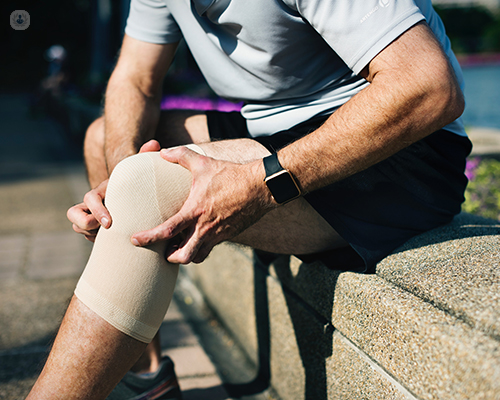Cartilage transplant: what happens during surgery?
Escrito por:The term cartilage transplant refers to the surgical implantation of articular (joint) cartilage into a joint. It should be differentiated from meniscus transplant, which is also sometimes referred to as cartilage in lay terms. Cartilage transplant is undertaken in isolated cartilage injuries of a joint that are causing symptoms such as pain or swelling. This procedure is usually undertaken after a trial of other techniques such as rest, activity modification, physiotherapy and surgical microfracture have been tried and failed to resolve symptoms. Leading orthopaedic surgeon Mr Sujith Konan explains more...

When would you consider a cartilage transplant for a patient?
The main considerations in choosing a patient for successful cartilage transplant are the state of the joint, biomechanics of the limb that holds the joint, and patient-related factors. The joint has to be well preserved in general and the cartilage lesion should be an isolated one. Cartilage transplant does not work for generalised cartilage failure. The limb holding the joint should be in good alignment. If the weight going through the joint is not uniformly distributed, the cartilage transplant is likely to fail. The ideal patient for cartilage transplant should be medically fit, non-smoker and have low body mass index.
How effective is cartilage transplant in improving symptoms?
In a well-selected patient, cartilage transplant can be rewarding. It can help relieve pain and swelling. The procedure can allow a return to activities that have an overall influence on improving quality of life. Due to the variations in outcomes reported in literature, the success rate is estimated to be around 80%.
What does the transplant procedure involve?
Cartilage transplant involves a two-stage procedure. In the first stage, some cartilage is retrieved from the joint that needs cartilage transplant. These are small bits of cartilage taken from the edges of the joint where the cartilage is expendable. This is then taken to a laboratory where the small bit of cartilage is grown into a sheet of cartilage. The patient then needs a second procedure to implant the cartilage into the defect in the joint. Both procedures may be undertaken as day case procedures and allow early movement of the joint.
Will I need any other surgery?
In some situations, the joint that needs a transplant is otherwise suitable but has abnormal weight distribution. For example in a knee joint, there may be a cartilage defect on the inside but the load through the joint may also be going through the inside, rather than the middle of the joint. This may result in early failure of the replaced cartilage. One way of mitigating this would be to perform an osteotomy (surgical bone fracture) to realign the joint to allow optimum bone distribution. This can be undertaken at the same time as the transplant.
What side effects or problems should I watch out for?
Failure is the biggest concern with cartilage transplant and is usually due to poor selection of a patient for this procedure. It is important not to consider cartilage transplant for all types of cartilage problems.
How long do the results last?
A successful cartilage transplant has good, prolonged results with a predictable outcome. One way of prolonging the longevity of the transplant is often activity modification after the procedure. While complete avoidance of activity is unnecessary after this procedure, avoiding repetitive stress of the joint by loading activities is protective in the long run.


